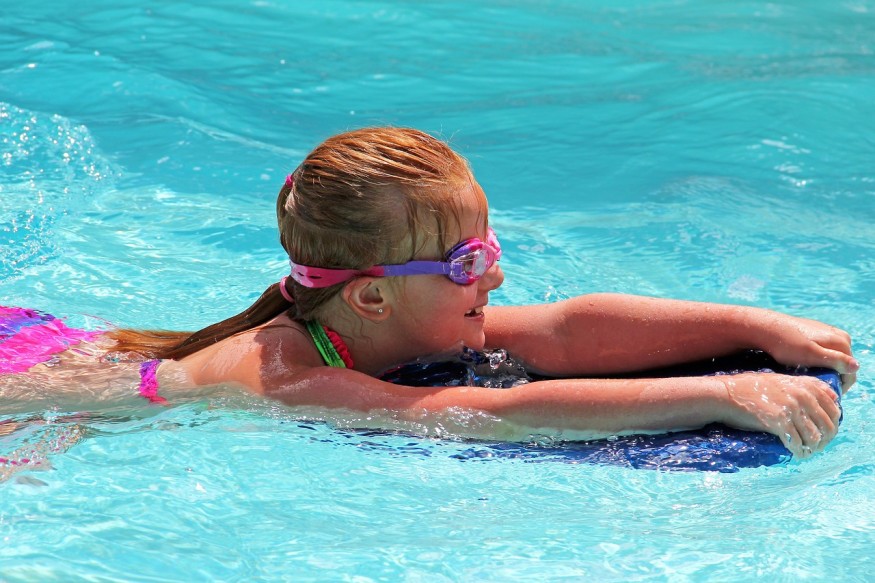Blondes often face green hair trouble after swimming, which can be frustrating during summer. This issue is commonly attributed to chlorine, but studies show that it is not the real culprit. So, what causes this green discoloration?

Copper in the Pool Causes Blonde Hair To Turn Green
Copper is the primary culprit behind green hair discoloration. It originates mainly from copper sulfate (CuSO₄), an algae-inhibiting compound used in swimming pools. While a minute amount is sufficient to prevent algae growth, higher copper levels may be present due to corroded water pipes.
When hair comes into contact with copper ions, which are charged variants of copper atoms with extra electrons, it absorbs them, resulting in the greenish tint. Research dating back to the 1970s supports copper as the cause of this phenomenon.
A study in 1978 immersed hair samples in water with varying copper ion concentrations, chlorine, and pH levels. It confirmed that exposure to free copper ions turns hair green. Chlorine, while not responsible for the green hue, intensifies it by damaging hair proteins and enhancing copper ion absorption.
How Hair Absorbs Copper in Swimming Pools
Hair is primarily composed of a structural fibrous protein known as keratin, characterized by its elongated sheet-like structure. Within this keratin structure, various chemical groups, including carboxyl, amino, and disulfide groups, exist. Copper ions have an affinity for these groups, forming copper-keratin complexes that persist in the hair, resulting in a green appearance.
A recent 2020 study highlighted that copper ions primarily bind to disulfide groups. Interestingly, this binding pattern is shared by other metal ions like zinc, lead, chromium, and mercury, making it valuable in forensic analysis to determine metal exposure in hair samples.
Notably, light-colored hair exhibits the most noticeable green discoloration, but research indicates that damaged hair, resulting from processes like bleaching, straightening, or sun exposure, is particularly prone to copper ion binding. This susceptibility is attributed to the presence of "broken bonds" in damaged hair's disulfide groups, facilitating copper ion attachment.
How To Prevent and Fix Green Discoloration in Hair
To prevent and fix blonde hair from turning green after swimming, there are effective preventive steps as well as ways to fix it that people can follow to safeguard hair color.
Prevention
- Wear a Swim Cap: Although not the most stylish choice, swim caps are effective in keeping chlorinated pool water away from your hair. While some water may still get in, it's unlikely to be sufficient to turn your hair green.
- Pre-Wet Your Hair: Before entering the pool, wet your hair, but not with pool water. Rinse it under a shower to saturate it. This pre-wetting makes it harder for your hair to absorb pool water, helping you avoid the dreaded green hue.
- Apply Leave-In Conditioner: Consider using leave-in conditioner or oil-based products before swimming to create a barrier that prevents your hair from absorbing pool water
How To Fix It
- If you notice a green tinge in your hair after swimming, shampoo your hair immediately to rinse out the chemicals, followed by a moisturizing conditioner.
- Try using ketchup to eliminate the green tint by massaging it into the affected area, wrapping it in tin foil for 30 minutes, and then shampooing and conditioning as usual.
- Use lemon juice to naturally lighten and remove green spots in your hair by saturating your hair for 5-10 minutes, followed by rinsing and conditioning with a leave-in conditioner.
- Rinse your hair with apple cider vinegar to neutralize any green tint before or after swimming to prevent chemicals from binding to your hair.
- Create a baking soda paste by mixing 1/4 to 1/2 cup of baking soda with water, apply it to the green areas, let it sit for three minutes, then rinse with shampoo and conditioner; repeat if needed for intense green discoloration.
RELATED ARTICLE:
Why is This Man's Urine Green? Doctors Explore the Reason of this Rare Case Study
Check out more news and information on Chemistry in Science Times.











